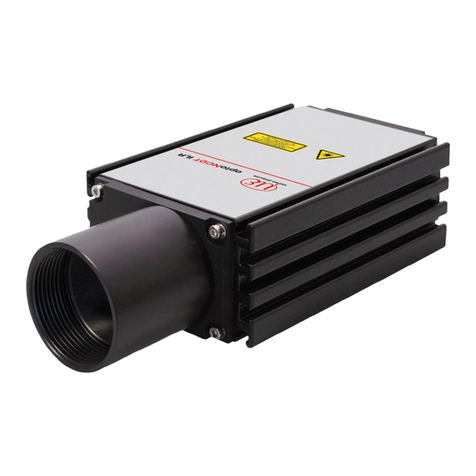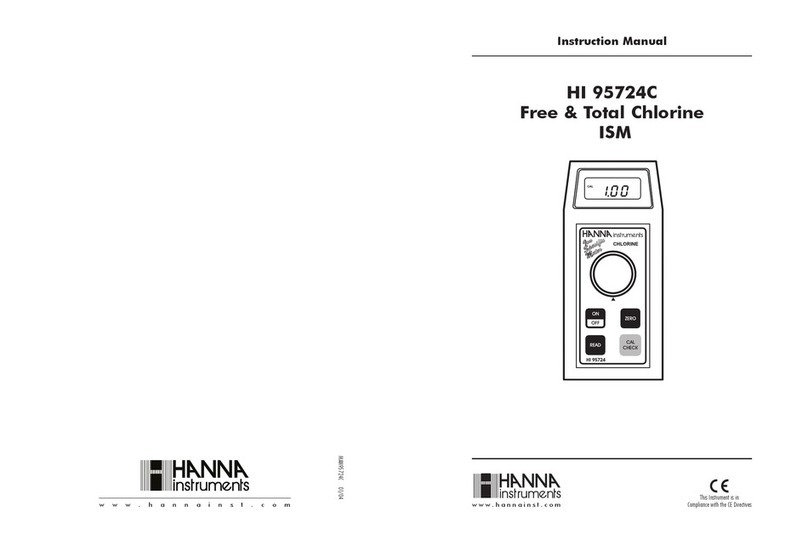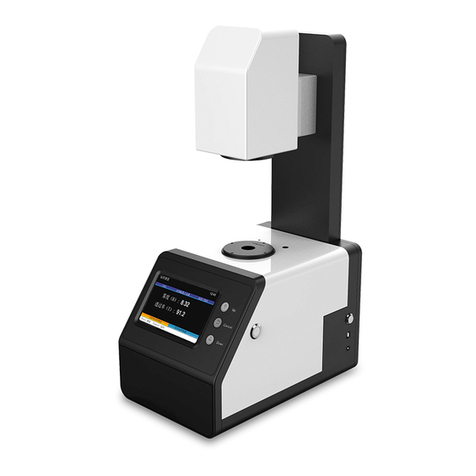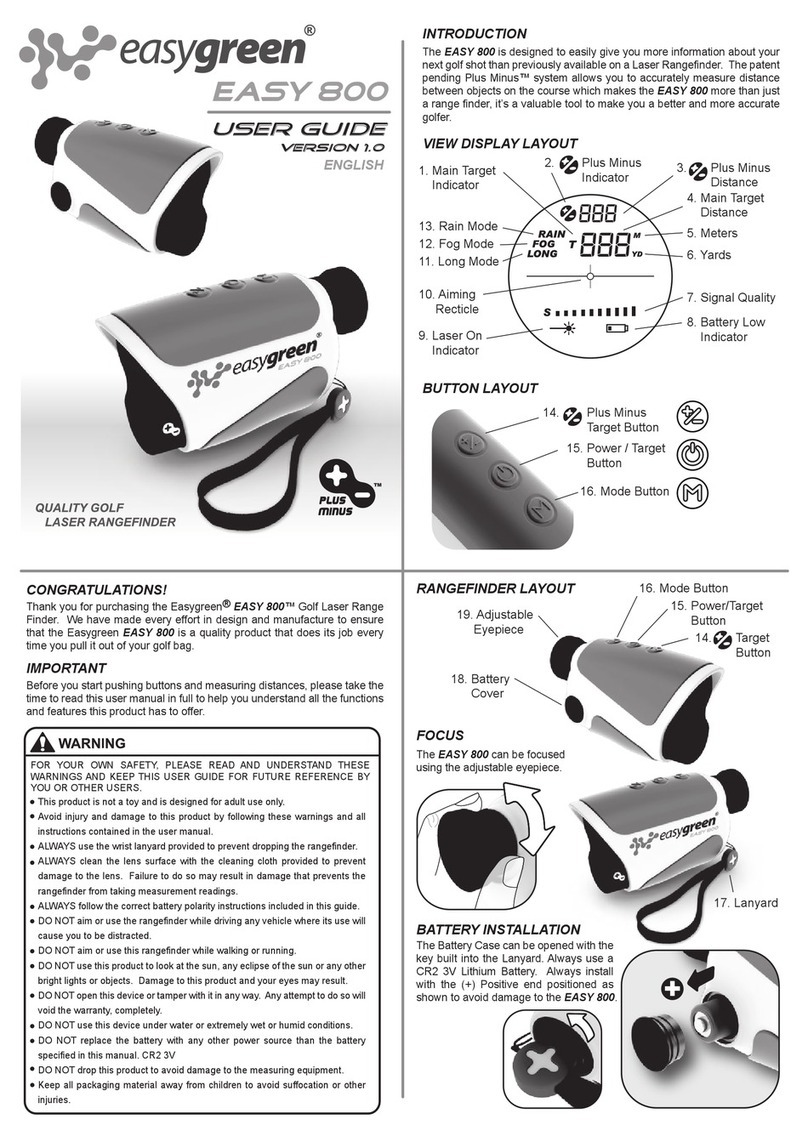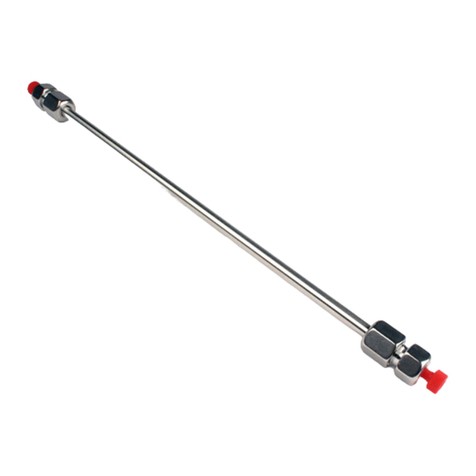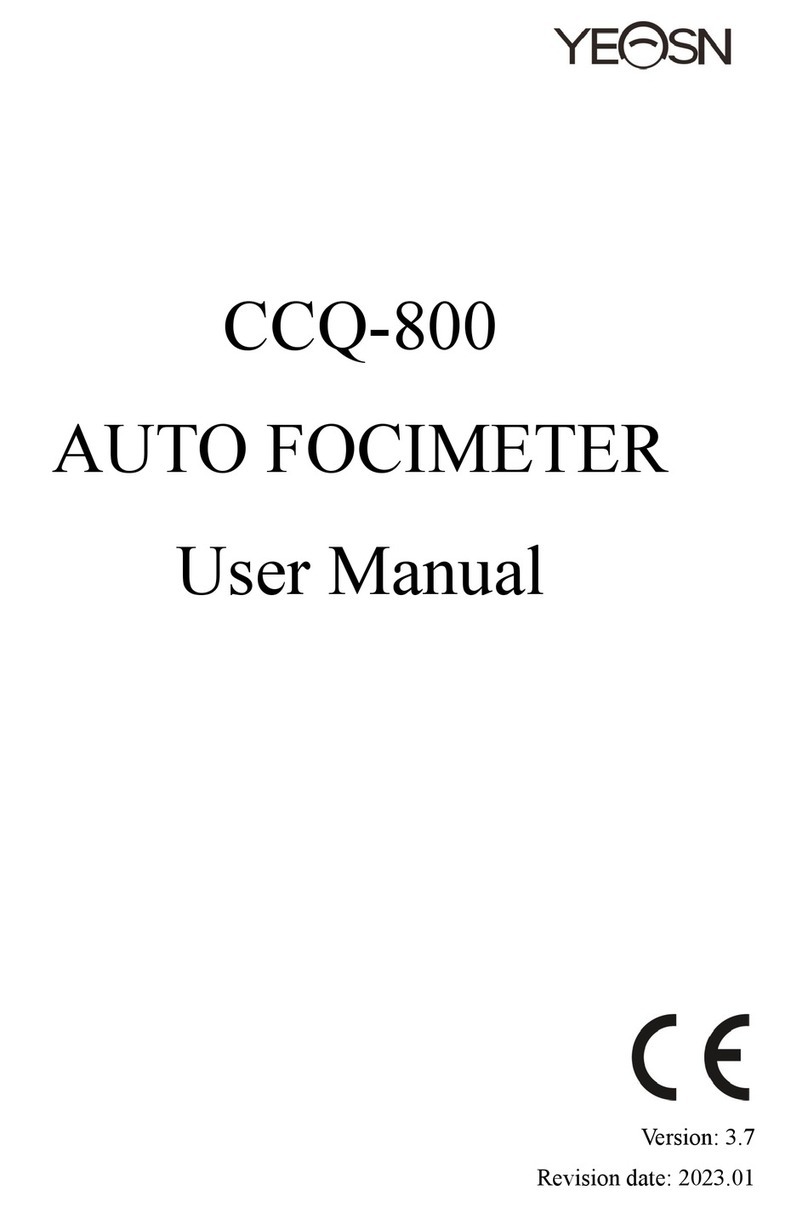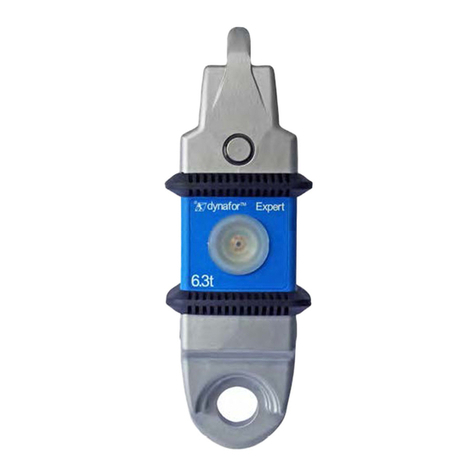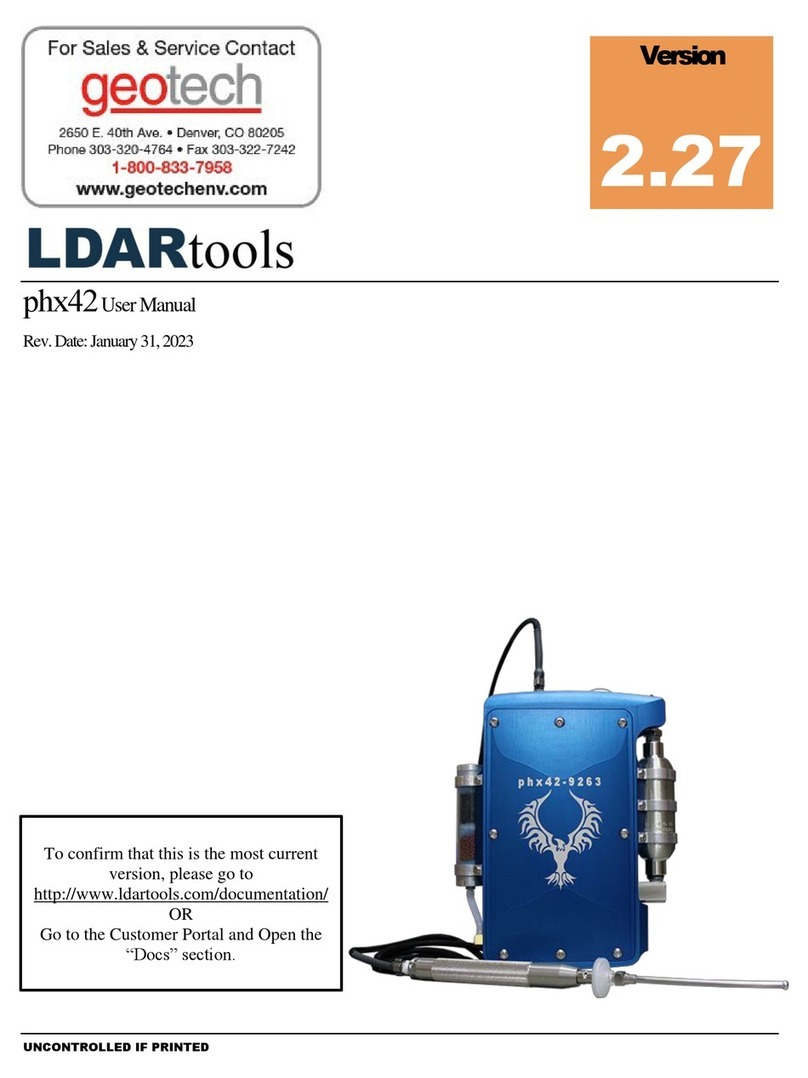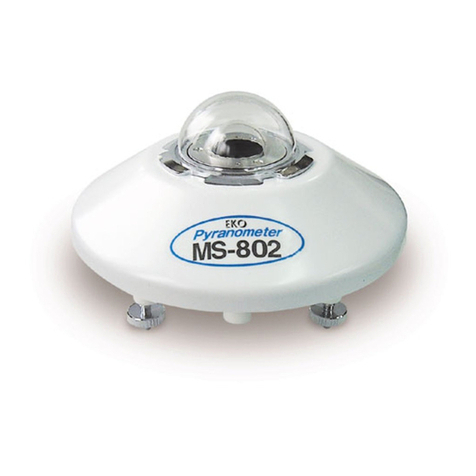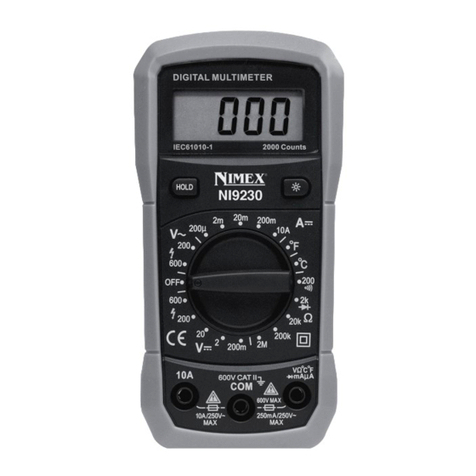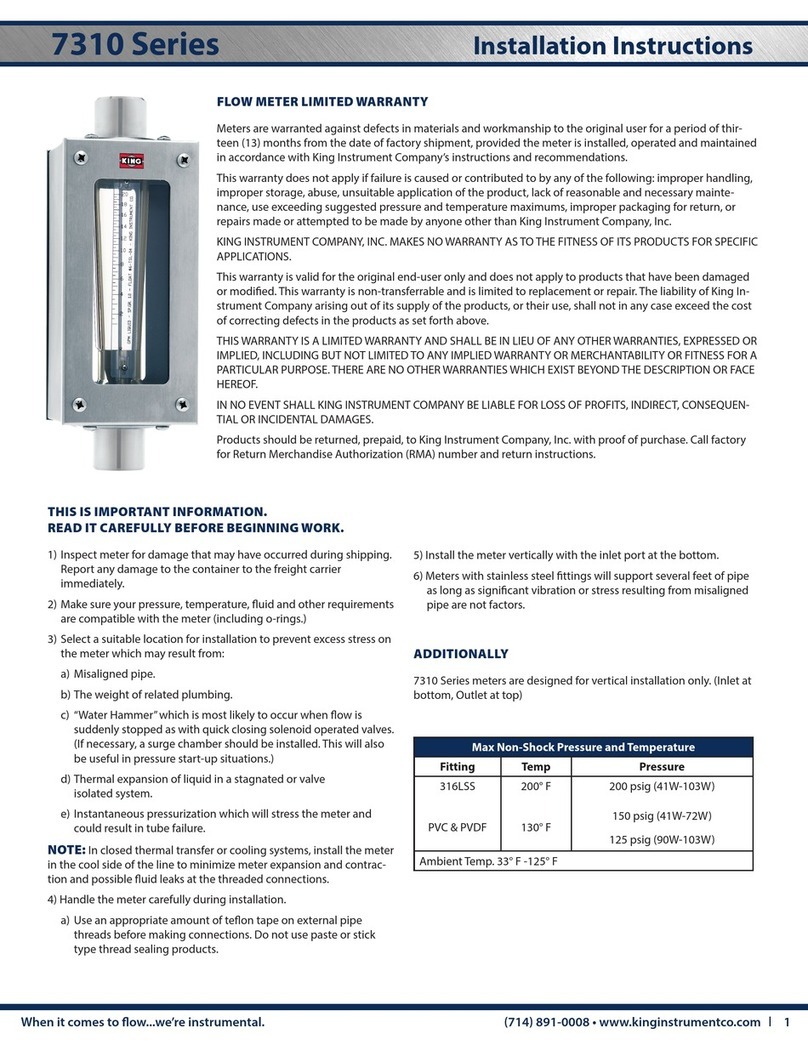Geosense VWLSS-200 User manual

V1.7 January 2021
I
N
S
T
R
U
C
T
I
O
N
M
A
N
U
A
L
VIBRATING WIRE
LIQUID SETTLEMENT SYSTEM
VWLSS-200
SETTLEMENT SYSTEMS

2
V1.7 January 2021
CONTENTS
1.0 INTRODUCTION
1.1 General description
2.0 CONFORMITY
3.0 DELIVERY
3.1 Packaging
3.2 Handling
3.3 Inspection
3.4 Storage
4.0 INSTALLATION
4.1 Preparation for Installation
4.2 Installation of Plate Mounted Sensors
4.3 Push-in Installations
5.0 DATA HANDLING
5.1 Monitoring the Settlement System Readings
5.2 Data reduction
5.3 Typical Calibration Sheet
6.0 MAINTENANCE
7.0 TROUBLESHOOTING
8.0 SPECIFICATION
9.0 SPARE PARTS
10.0 RETURN OF GOODS
11.0 LIMITED WARRANTY

3
V1.7 January 2021
1.0 INTRODUCTION
This manual is intended for all users of Vibrating Wire Liquid Settlement System
(VWLSS-200) manufactured by Geosense and provides information on its installation,
operation and maintenance.
1.1 General Description
The Vibrating Wire Liquid Settlement System (VWLSS-200) is used to monitor
settlement or heave in soils and other structures such as embankments, earth & rockfill
dams. A typical installation is shown in Figure 1, below.
The main components are a fluid reservoir, liquid filled tubing and a vibrating wire
pressure transducer, mounted on a plate or, for a borehole application, attached to an
anchor.
The vibrating wire sensor is positioned at a point where settlement is to be detected. The
pressure sensitive side of the sensor is connected to a reservoir, located on stable
ground, by two liquid-filled tubes to create a continuous fluid column. As the sensor
settles with the surrounding ground, the height of the column is increased and the
corresponding higher pressure is detected by the sensor. Settlement or heave is
calculated by converting the liquid pressure registered by the sensor, into metres of liquid
head. The sensor is fitted with a 4 core cable to obtain the pressure and temperature
readings.
Each sensor contains a Thermistor for the temperature measurement, and gas discharge
tubes for lightning protection. The system uses de-aired solution of antifreeze and water
to prevent freezing and algae growth. The system uses two liquid lines so that it could be
flushed to remove air bubbles from the system.
The effects of changes in atmospheric pressure are removed by either using a vented
transducer or mathematically, using information from another sensor.
It is VITAL that personnel responsible for the installation and
use of this Settlement System, READS and UNDERSTANDS
this manual, prior to working with the equipment.
Height of the column of liquid
increases as the cell moves down
with the settlement of the ground
The VW transducer cell
measures the pressure of the col-
Single or multiple
liquid reservoir(s)
Liquid filled tubing
Figure 1

4
V1.7 January 2021
The Vibrating Wire Liquid Settlement System (VWLSS-200) is available in two
options and comprises of the following components:-
OR
Plate Mounted VW Settlement Cell
Pressure range 70 to 345 kPa
Drive-in Settlement Cell
Pressure range 70 to 345 kPa
Tubing & Cable
Twin tubing with over sheath
PUR coated, 4 core screened cable
Lengths cut to suit individual requirements
Header Reservoir
Available for single and multiple Settlement
Cells (up to 10).

5
V1.7 January 2021
2.0 CONFORMITY
Geosense Ltd
Nova House
Rougham Industrial Estate
Rougham, Bury St Edmunds
Suffolk , IP30 9ND
United Kingdom
Tel: +44 (0)1359 270457
Email: [email protected].uk, Web: www.geosense.co.uk
Declaration of Conformity
We Geosense Ltd at above address declare under our sole responsibility that the Geosense products
detailed below to which this declaration relates complies with protection requirements of the following
harmonized EU Directives:-
• Electromagnetic Compatibility Directive (EMC) 2014/30/EU
• Restriction on Hazardous Substances Directive RoHS 3 (EU Directive 2015/863)
Equipment description Vibrating Wire Liquid Settlement System
Make/Brand Geosense
Model Number VWLSS-200
Compliance has been assessed with reference to the following harmonised standard:
EN 61326-1:2006 Electrical equipment for measurement, control and laboratory use.
EMC requirements. General requirements.
A technical file for this equipment is retained at the above address.
January 2021
Martin Clegg
Director

6
V1.7 January 2021
3.3 Inspection/functionality
It is vital to check all the equipment in the shipment as soon as possible after taking
delivery and well before installation is to be carried out. Check that all the
components that are detailed on the documents are included in the shipment.
Check that the equipment has not been physically damaged.
If components are missing or damaged, contact the delivery company or Geosense.
Although the system is not connected to the reservoir, a functional check can still be
carried out by connecting the VW Sensor Cable to a VW Readout, typically as in
picture.
Prior to carrying out function checks, ensure that the Settlement System has been
stored in a ‘reasonably stable’ temperature for at least 2 hours.
3.0 DELIVERY
This section should be read by all users of Vibrating Wire Settlement Systems
manufactured by Geosense®
3.2 Handling
Whilst they are a robust devices, Geosense® Vibrating Wire Liquid Settlement
Systems are precision measuring devices. They and their associated equipment
should always be handled with care during transportation, storage and installation.
Once the shipment has been checked (see below), it is recommended that
Settlement Systems remain in their original packaging for storage or further
transportation.
Cable and tubing should be handled with care. Do not allow them to be damaged by
sharp edges (rocks for example) and do not exert force on them as this may damage
the internal conductors or cause leaks and rendering the instruments useless.
3.1 Packaging
Geosense® Vibrating Wire Liquid Settlement Systems (VWLSS-200) are
appropriately packed for transportation to site. Packaging is suitably robust to allow
normal handling by transportation companies. However, inappropriate handling
techniques may cause damage to the packaging and the enclosed equipment. The
packaging should be carefully inspected upon delivery and any damage MUST be
reported to both the transportation company and to Geosense® .
Calibration Sheets contain VITAL information about the
piezometer. They MUST be stored in a safe place.
Only COPIES of calibration certificates should be taken to site
The original certificates should be stored safely.

7
V1.7 January 2021
3.4 Storage
All equipment should be stored in an environment that is protected from direct
sunlight.
It recommended that cables be stored in a dry environment to prevent moisture
migrating along the cable in the unlikely event of prolonged submersion of exposed
conductors.
Storage areas should be free from rodents as they have been known to damage
connecting cables and tubing.
No other special requirements are needed for medium or long-term storage although
The displayed values of the VW sensor reading and temperature, should be
reasonably stable ( +/- 3 full digits ) for this check. Ensure body, plate and tubing are
stationary.
The elevation of the Geosense® factory is +60 metres above sea level and
barometric pressures change with altitude by approximately 1.2kPa per 100 metres
3.3 Inspection/functionality contd….
To carry out the check, connect a Vibrating Wire readout
As follows:-
RED =VW +
BLACK =VW -
GREEN =Temp
WHITE =Temp
Record the values (and units) displayed on the readout
together with the pressure transducer serial numbers.
The “CHECK” readings should coincide with the factory zero
on the calibration sheet (see the example calibration sheet in Section 9) within +/- 50
digits after barometric and temperature corrections are made.
The ‘CHECK Readings WILL be affected by changes in
atmospheric pressure and temperature changes.

8
V1.7 January 2021
4.0 INSTALLATION
The following sections describe some typical installation procedures for Geosense® VW
Settlement Systems.
This section of the manual is intended for all users of Vibrating Wire Settlement Systems
manufactured by Geosense® and is intended to provide guidance with respect to their
installation.
It must be remembered that no two installations will be the same and it is inevitable that
some ‘fine tuning’ of the following procedures will be required to suit specific site
conditions.
4.1 Preparation for Installation
When installing more than one System Plate / Body, record the assigned unique
identifying code for particular positions (remembering to ensure that the System
fitted with the longest cables are selected for the most distant installations).
Ensure there will be enough cable and tubing to route it to the intended readout /
monitoring location. The location of the Reservoir need not be the same as the
electrical termination, but it is commonly so.
The elevation / location of the Settlement System installations should be identified
by the Engineer responsible for the interpretation of the data, or as detailed on
contract drawing or in the specification.
It is important to consider the protection of the Reservoir when selecting a suitable
location. It should be remembered that Reservoir and connecting tubes must be
protected from damage as they are sensitive and vulnerable. In some locations it
will be necessary to install protective sleeves or enclosure.
The function of the system should be checked prior to installation as described in
section 3.3. Check the system using a readout with the audio function switched on.
A clear ‘ping’ should be produced.
It is preferable to install the terminal panel and reservoir prior to installing the
settlement cells. This allows for simple connection and testing, prior to backfilling
over the cells and tubing.
It is VITAL that personnel responsible for the installation and
use of the Settlement System READ and UNDERSTAND this
manual, prior to working with the equipment.
**********
As stated before, it is vital to check all the equipment in the shipment soon after
taking delivery and well before installation is to be carried out. Check that all
components that are detailed on the shipping documents are included.

9
V1.7 January 2021
4.2 Installation of Plate Mounted Sensors
For a Liquid Settlement System (VWLSS-200)
supplied with the plate option, use the following
guide:
1. Pour a layer of sand upon the surface plane
intended for installation of the Settlement Plate,
approximately 5 to 10 cm thick.
If the subsurface includes voids, a layer of geotextile
material should be placed under the sand to prevent
it migrating into the voids.
2. Spread out the sand and flatten to create a
compacted, smooth layer.
3. Place the Settlement Plate onto the sand layer with
the VW Transducer uppermost. Use a small spirit
level to ensure the plate is level. Putting force only
on the plate itself, firmly push the metal plate into
the sand, twisting slightly from side to side to ensure
that good contact is made.
4. Starting from the centre, pour a cover layer of sand
over the entire Settlement Plate, approximately 5 to
10 cm thick.
5. This is now a good time to do a final CHECK on the
function of the equipment, before completing the
backfill.

10
V1.7 January 2021
6. Connect the VW Cell Sensor Cable to a readout and
confirm the sensor is producing a reading. (At this
stage the value is not important but it should not
fluctuate too much).
To perform a simple functional check, note the
reading on the display and then, with the readout still
connected, raise the coupling end of the liquid filled
tubing by about 1 metre.
Observe the ‘Digits’ / ‘B units’ / ‘Frequency’ value on
the readout and it should be reducing as the tube is
raised and increasing again when it is lowered.
7. Install the Terminal Panel & Reservoir.
It is highly recommended that the terminal cabinet is
installed and commissioned prior to backfilling the
plate locations and cable trenches.
The terminal panel and reservoir should be mounted
outside the settlement area, with sufficient weather
protection to minimise any temperature fluctuations in
the liquid.
8. BEFORE connecting the tubes from the settlement
cells to the reservoir connector block, partly fill the
reservoir with the de-aired liquid (supplied in separate
bottles).
With the reservoir partly filled, remove the transport
plugs from inside the reservoir, using a screwdriver or
socket spanner.
(In the photo - liquid removed for clarity)
9. Prepare to connect each pair of tubes from the
settlement cells to the connector block. To do this,
first remove the protective covers from the ‘male’
connectors on the terminal block.
These are arranged in pairs (front and back) for each
cell.

11
V1.7 January 2021
10. Then remove the protective cap from the ‘female’
connectors on the settlement cell tubes.
To remove the risk of introducing air bubbles into the
terminal block, fill this ‘female’ connector with the de-
aired liquid BEFORE connecting it to the ‘male’
connector on the terminal.
To fit the connector, pull back the outer sleeve on the
‘female’ connector and push the connectors together
until they latch in place.
The tubes from each cell are usually connected to the
panel arranged ‘Front’ and ‘Back’.
11. With the cell tubes connected, top up the liquid in the
reservoir until it reaches the line (just below the
overflow)
12. Replace the lid of the reservoir to prevent evaporation
13. The signal cable from each cell must be terminated so
as to enable gathering of the settlement data.
Termination can take many forms from a simple
connector panel for a portable readout, through stand-
alone data loggers to remotely accessed data
recording modules.
14. Excess tubing should be coiled and buried in a
shallow pit close to the terminal panel to protect it and
reduce the affects of temperature changes on the
liquid. The pit should be not less than 0.5m deep and
backfilled with clean sand to protect the tubes.
DO NOT CUT THE TUBING
Transducer cables can be either ‘plain’ or ‘vented’. The latter is used to eliminate the
effects of changes in barometric pressure. Where vented cables are used, they are fitted
with moisture traps to prevent moisture build-up in the vent tubes.
The absorbent beads in the moisture traps must be replaced at regular intervals to avoid
erroneous readings due to pressure imbalances.

12
V1.7 January 2021
Typical Settlement Plate Installation
Danger
- Risk of damage to tubes
Always backfill around buried
cable and tubes with ‘stone-free’
material.
Cables (blue) and Tubes (Black)
Prior to placing of protective sand layers below
and above.
Typical Terminal Cabinet
Fitted with Vented cables / Desiccant Moisture
Traps / LINX Data Logger

13
V1.7 January 2021
4.3 Push-in Installations
Some installations require a Settlement Sensor to be pushed into undisturbed
material at the bottom of a borehole or pushed into the ground from the surface.
For this purpose, Geosense produces specially designed Push-in Settlement
Systems. The installation involves the use of a pushing adaptor connected to steel
placing rods or drilling rods. The rod(s) must be strong enough to withstand the load
that will be required to push the Settlement Sensor into the material at the base of the
borehole or from ground level.
Only purpose built PUSH-IN Settlement Sensors can be used
for this type of installation.
A special designed pushing adaptor is required to support and push the Settlement
Sensors into a borehole. This adaptor is normally manufactured by Geosense and
can be fabricated or modified to suit the size of the drilling rods / tubes to which it will
be connected. The design of the adapter allows the Settlement Sensor to be pushed
to the required elevation and then the rods and adaptor can be extracted, leaving the
cell in place and connected to the tubes and cables.
Where drilling rods are to be used to push the Settlement System into the base of the
borehole the Settlement Cell cable and tubing must remain inside the rods to protect
them. They cannot be attached to the outside of the drilling rods as the
installation is inserted into the borehole.
Any preliminary borehole may be cased or un-cased. The final installation procedure
will need to be created to include the following variations and based upon the
previously described installation procedures.
1. Prepare the Settlement Sensor and confirm that a VW reading is obtainable
from the Sensor, as described in Section 4.
2. Fit the specially designed pushing shoe to the lower end of the first ‘Pushing /
Placing Rod’. Grease the inside the of the pushing shoe to make it easier to
release the Sensor and minimise the risk of ‘binding’.
3. Place the Settlement Sensor near the installation location then unroll the Sensor
cable and the Liquid Lines.
4. The tubing and cable must be threaded through the rods used to push the
sensor. Thread the cable and tubes through the pushing shoe and first rod.
5. The Settlement Sensor must be pushed up inside the shoe until it is firmly
bearing against the back of the shoe. Make sure that the cable and tubing is
loose inside the pushing rod.
6. As the rods are lowered into a borehole, the cable / tubes must be restrained to
prevent the Settlement Sensor dropping out of the shoe.

14
V1.7 January 2021
7. As rods are added, they are slid over the cable and tubing. In an open hole,
care must be taken to maintain light tension on the cable / tubes as the rods are
coupled together over the installation. Failure to do so may allow the sensor to
drop out of the shoe which could cause it to be damaged when it reaches the
base of the hole.
Never rotate the lower rods when connecting additional rods. This could
cause the cable or tubing to become twisted and could result in a
damaged installation.
8. Always count the rods into the holes so as to be sure of the Settlement Sensor’s
elevation at any time. (In soft ground, heavy rods could push the Settlement
Sensor beyond its intended location without applying any driving force).
9. When the sensor is in its intended position, slowly withdraw the pushing rods
and adaptor, taking care to allow the tubing and cable to pass through the rods
freely, as the rods are withdrawn.
AGAIN … Never rotate the lower rods when removing the rods. This could
cause the cable or tubing to become twisted and could result in a failed
installation.
10. Feed the cable and tubes through the rods as they are removed.
11. For trenching and termination, please refer to page 10
This system can be a cost effective solution where Settlement Sensors are to be
installed in soft ground but care must be taken not to damage the Cable / Tubing
when the pushing rods are withdrawn.
Push-in Settlement Sensor with
cable and tubing Push-in Settlement Sensor ready
for installation

15
V1.7 January 2021
5.0 DATA HANDLING
The function of the instrument is to provide useful and reliable settlement data. Accurate
recording and handling of the data is essential if it is to be of any value.
5.1 Monitoring the Settlement System Readings
Geosense Vibrating Wire Liquid Settlement System (VWLSS-200) bodies contain
Temperature sensors. Where a system is installed in a zone where its temperature is
likely to fluctuate significantly, records of both settlement and temperature data
should be used to assess any effects temperature has on the data.
5.1.1 Portable Readouts
Geosense offer a range of readout and data logging options. Specific operation
manuals are supplied with each readout device.
Below is a brief, step-by-step procedure for use with
the Geosense VW1 portable readout.
1. Connect signal cable from the sensor to the
readout following the wiring colour code.
Conductor colours may vary depending upon
the extension cable used.
RED =VW +
BLACK =VW -
GREEN =Temp
WHITE =Temp
2. Press the ‘On/Off’ button to switch the unit on. Press it
again to acquire a reading from the connected
instrument.
3. The readout displays the Vibrating Wire readings in both
‘Frequency’ (in Hz) and Linear ‘B’ Digits (in Hz2/1000).
Temperature reading in both resistance (Ohms) and
degrees C.
For more details see the readout manual.
4. Press and hold down the On/Off’ button to switch the unit off.
INITIAL readings from the sensors should be recorded after they have been fully
installed and the cables buried.
5.1.2 Data Loggers
A number of data loggers are available to automatically excite, interrogate and record
the reading from Vibrating Wire instruments. These include devices manufactured by
Geosense in both single and multi-channel manufacturers of data loggers that can be
readily used with Vibrating Wire Settlement Systems. Specific configuration and
programming advice can be obtained from Geosense.

16
V1.7 January 2021
5.2 Data Reduction
Overview
The system, essentially, comprises a column of water with the Reservoir at one end
and the sensor at the other. If the elevation of the sensor reduces (settlement) and
the elevation of the reservoir remains constant (as should be the case), the column of
water increases in height.
This increase in liquid column height applies more pressure on the sensor, resulting
in a changed reading. Due to the nature of the Vibrating Wire sensor, this increase in
pressure produces an DECREASE in the ‘Raw’ reading. (This is as a result of the
flexing of the sensor diaphragm and the consequential reduction of tension in the
attached ‘Vibrating Wire’. It’s tension being measured in frequency.)
‘Raw’ readings from a VW Settlement System are, therefore, typically in form that is a
function of frequency. Commonly the units would be either Frequency - Hertz(Hz),
Linear - Hz2/1000 or Hz2/1000000 or Period - 1/T.
Settlement is conventionally expressed as a negative value and calculated simply by
subtracting an ’Initial’ reading from the ’Current’ reading and multiplying it by a
Sensor ’Constant’.
Having recorded the ‘Initial’ VW reading and Temperature after the installation has
stabilised, all subsequent readings can be referred to these values. Use the Initial
VW Reading as Ro and the Initial Temperature value as To. The effects of changes in
atmospheric pressure can be significant and are removed by either using a vented
transducer or mathematically using data from a Barometric pressure sensor.
Refer to the individual calibration sheets for the appropriate calibration and thermal
factors for each sensor. Use the following formula to determine settlement.
5.2.1 Linear calculation of data for a ‘non-vented’ system (using mbar
barometric correction)
Settlement = [{(CF * ∆R) + (TK * ∆T)} - (Bk * ∆B)] / SG
ΔR = RC – R0
ΔT = TC – T0
ΔB = BC – B0
Where: CF = Calibration Factor (from Calibration Sheet - see note on P16)
SG = Specific gravity of system liquid (1.037 kg/l)
R0 = Initial site reading
RC = Current reading
TK= Thermal Factor (from Calibration Sheet)
T0 = Initial Temperature
TC = Current Temperature
B0 = Initial Barometric pressure (at installation)
BC = Current Barometric pressure (at time of readings
BK= Conversion factor from millibar to metres of water (0.0102)
(Continued on page 17)

17
V1.7 January 2021
Geosense Calibration Sheets provide a NEGATIVE (-)
Calibration Factor value for Settlement Cells. The equations
REQUIRE a POSITIVE (+) Calibration Factor to produce a
NEGATIVE value representing Settlement.
5.2.2 Calculation of data for a self compensating, ‘vented’ system.
Settlement = {(CF * ∆R) + (Tk * ∆T)} / SG
ΔR = Rc – R0
ΔT = Tc – T0
Where:
CF = Calibration Factor (from Calibration Sheet)
SG = Specific gravity of system liquid (1.037 kg/l)
R0 = Initial site reading
RC = Current reading
TK = Thermal Factor (from Calibration Sheet)
T0 = Initial Temperature
TC = Current Temperature
For example, using the non-vented equation:
Initial VW Readings R0 after installation was 7905 Digits (Hz2 /1000)
at sensor temperature T0 of 17°C
and Barometric pressure B0 of 1012 mb
Current VW Reading RC is 7530 Digits
at sensor temperature TC of 15°C
and Barometric pressure of 1025 mb
Calibration sheet shows - 0.002324m/Digit for CF
and - 0.010512 m/(°C) for TK
ΔR = RC – R0 = 7530 - 7905 = -375 Digits
ΔT = TC – T0 = 15 - 17 = -2 0C
ΔB = BC – B0= 1012 - 1025 = - 13 mb
Settlement = [{(0.002324 * -375) + (-0.010512 * -2)} - (0.0102 * -13)] / 1.037
= [{ -0.8715 + 0.021 } + 0.1326 ] / 1.037
= 0.692 m
From the above sample calculation, it can be seen that generally the temperature effects
are small, which is commonly true for buried sensors. However, the effects upon the
liquid cannot be included in this compensation and where tubing is exposed the effects
can be more significant.
** If calculated settlements appear to be RISING, check the liquid level in the reservoir
and check the elevation of the reservoir in case it has settled. Also confirm that a positive
Calibration Factor has been used in the calculations.

18
V1.7 January 2021
5.3 Typical calibration Sheet

19
V1.7 January 2021
6.0 MAINTENANCE
If the VW readings appear unusual (see 7.0 Troubleshooting) then it maybe necessary to
flush the system.
The Vibrating Wire Liquid Settlement System (VWLSS-200) is designed so that if the
contained fluid becomes contaminated or a significant number of air bubbles appear, the
system can be flushed through and fluid replaced with fresh de-aired Water/Glycol mix.
(Contact Geosense for advise & assistance)
Maintenance is not required on the sensor body/plate, or any below soil surface parts.
Very low and general maintenance is sufficient for the remainder of the (above soil)
System, consisting mainly of visual checks every 2-3 months for:
• Ensure the reservoir level is up to the overflow tube - top up if necessary,
• Connection tubes are still firmly in place and sealed,
• The fluid tubes are clean and clear.
• Wiring connections are in good order.
Where ‘Vented’ transducers are employed, the desiccant
beads in the moisture traps MUST be replaced at regular
intervals
Maintenance of wiring connections between the Vibrating Wire
Liquid Settlement System (VWLSS-200) and any terminal panels / or loggers should
involve occasional tightening of any screw terminals to prevent loose connections, or
cleaning contacts to prevent the build up of corrosion.

20
V1.7 January 2021
7.0 TROUBLESHOOTING
It is generally accepted that when a Vibrating Wire instrument is producing a stable
reading on a suitable readout, the value will be correct. Only on very rare occasions will
this be untrue.
In almost all cases, a fluctuating reading is a sign of a faulty signal from the sensor. The
fault could be in either the sensor, the connecting cable, any switch boxes or the readout.
The best way to fault find an instrument is to isolate it from all other instruments and
connections.
Table of contents
Other Geosense Measuring Instrument manuals
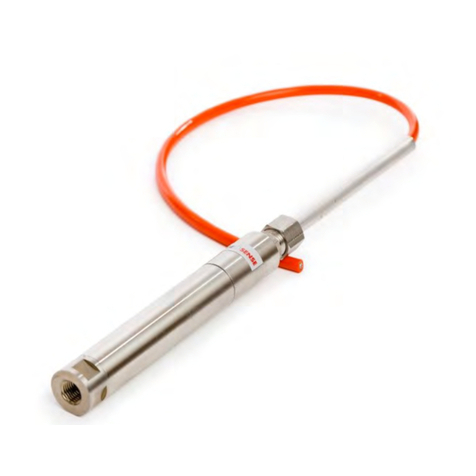
Geosense
Geosense VWPHT-3600 Series User manual
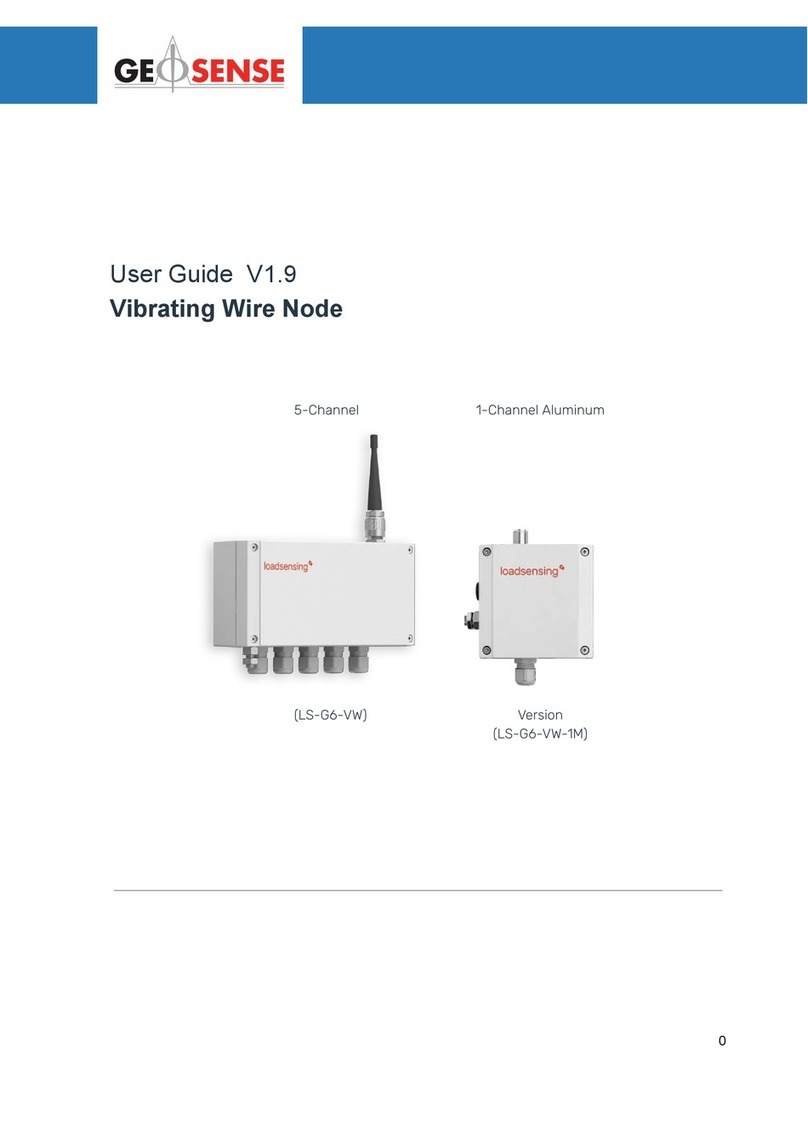
Geosense
Geosense LS-G6-VW User manual
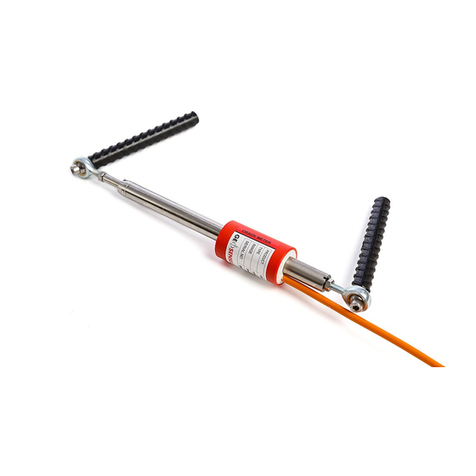
Geosense
Geosense VWCM-4000 User manual
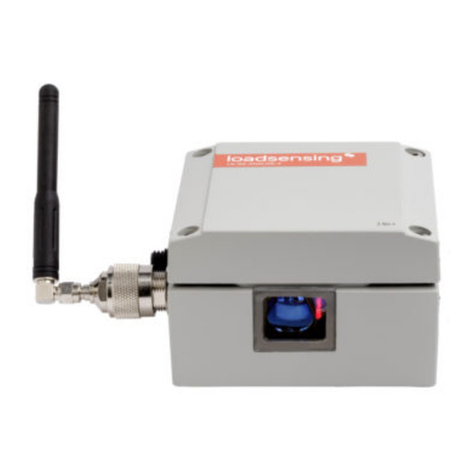
Geosense
Geosense WI-SOS 480 User manual
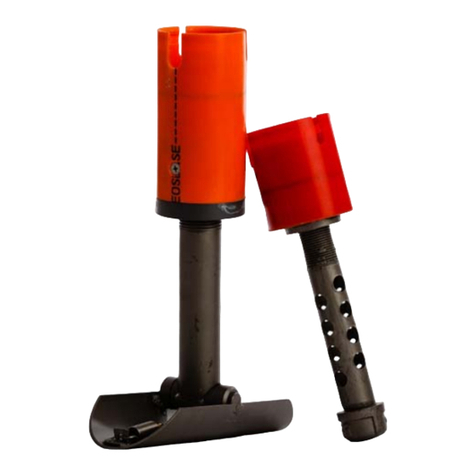
Geosense
Geosense Quick Joint User manual
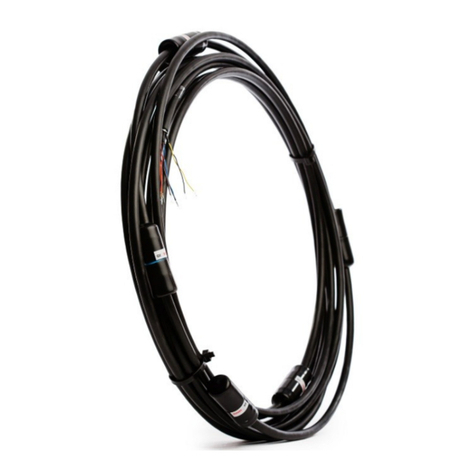
Geosense
Geosense TP-1 User manual
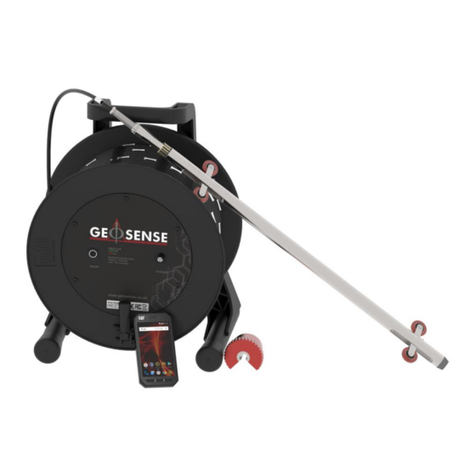
Geosense
Geosense MEMS DPI I User manual
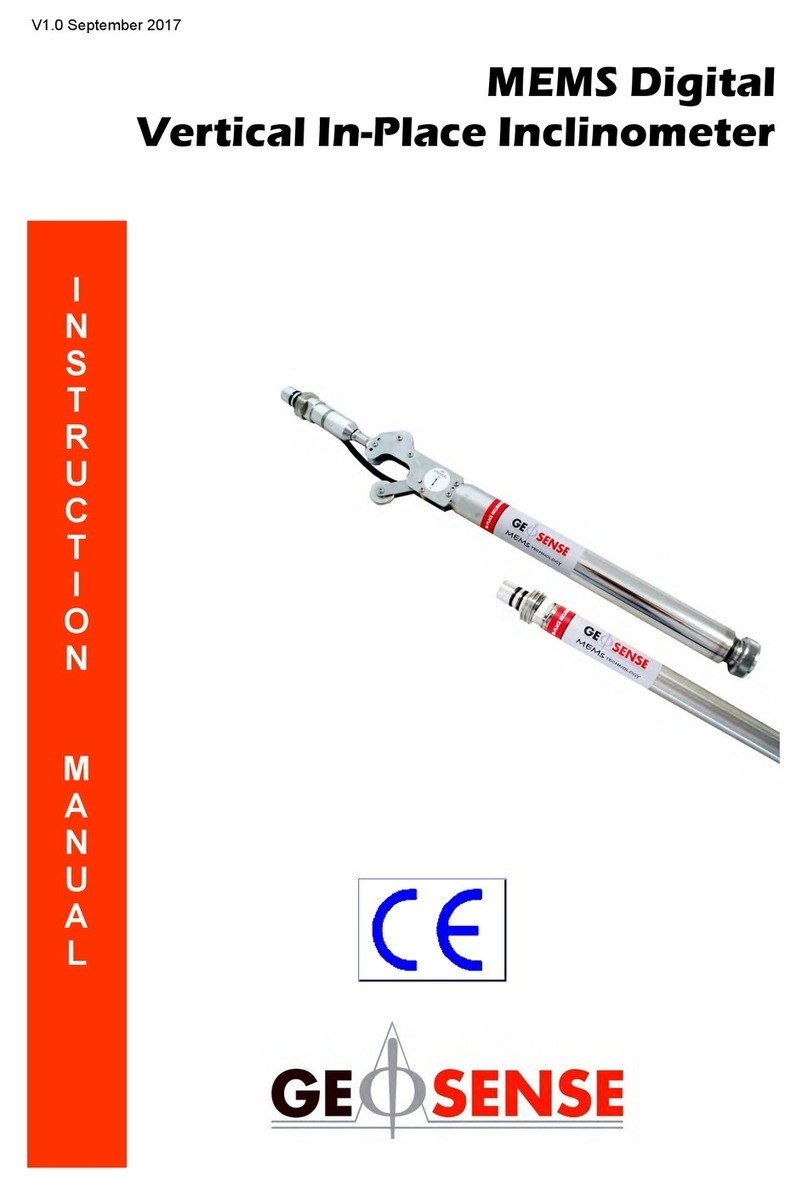
Geosense
Geosense IPI-V-1 User manual
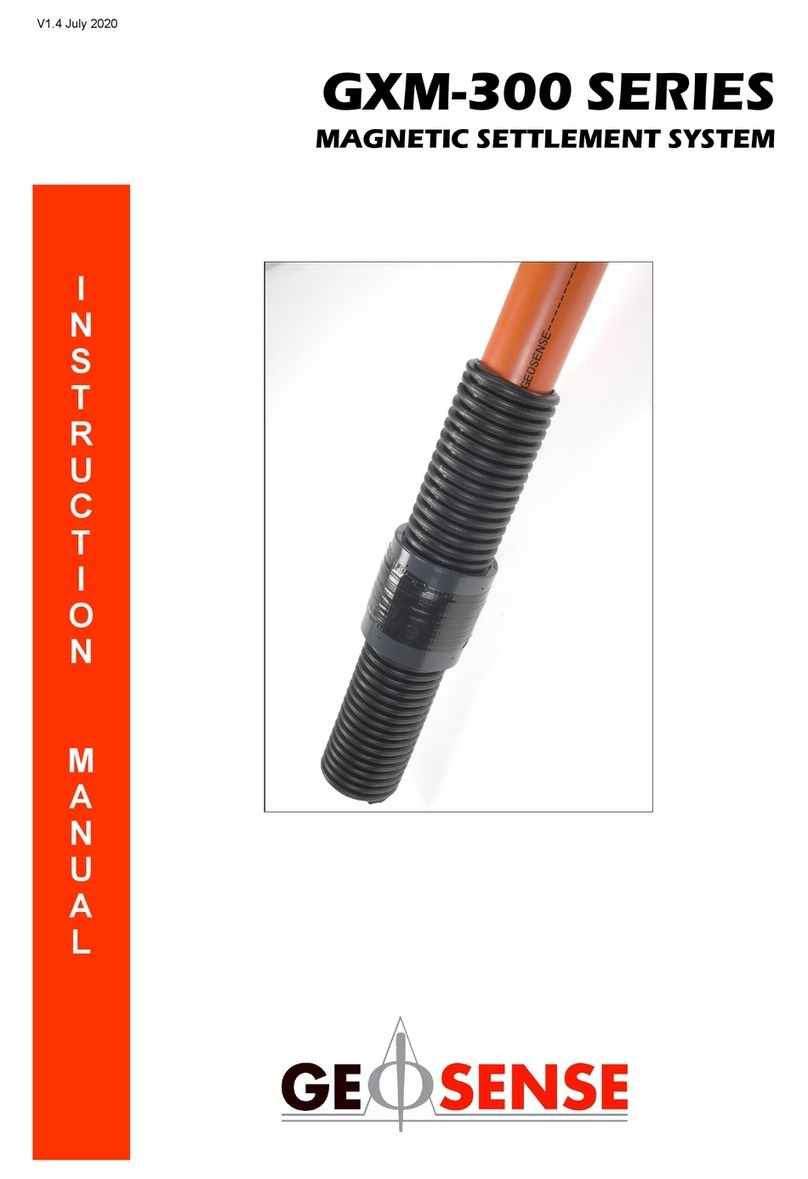
Geosense
Geosense GXM-300 Series User manual
Popular Measuring Instrument manuals by other brands
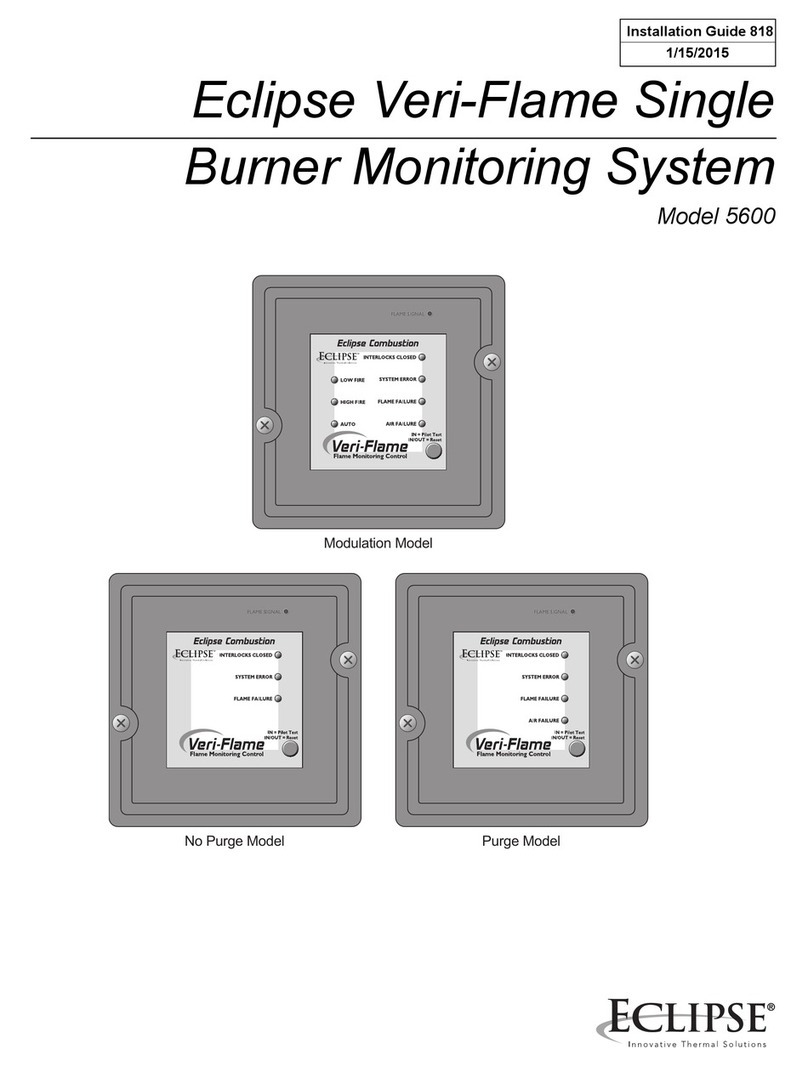
Eclipse
Eclipse 5600 No Purge installation guide
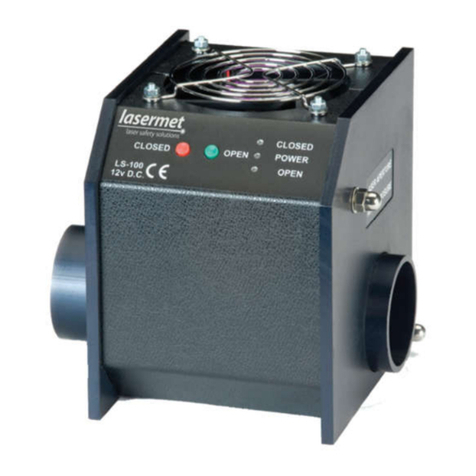
Lasermet
Lasermet LS-100-12 instruction manual
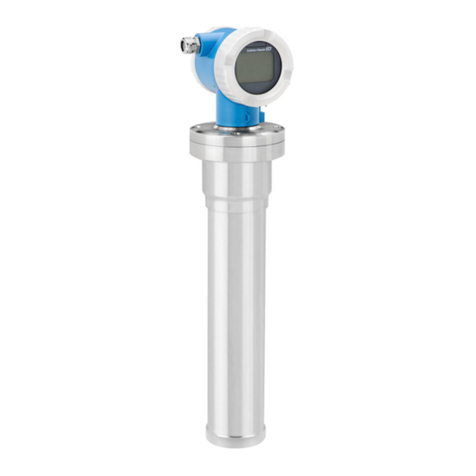
Endress+Hauser
Endress+Hauser Gammapilot M FMG50 Brief operating instructions
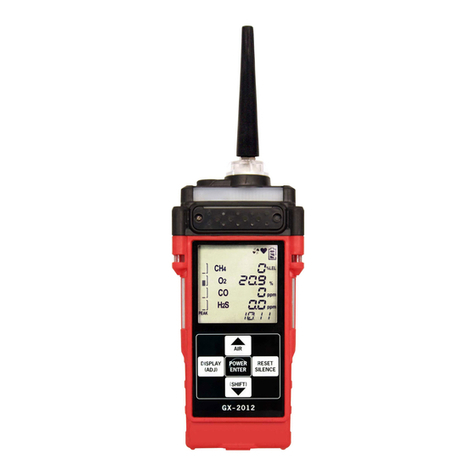
RKI Instruments
RKI Instruments GX-2012 Quick reference guide
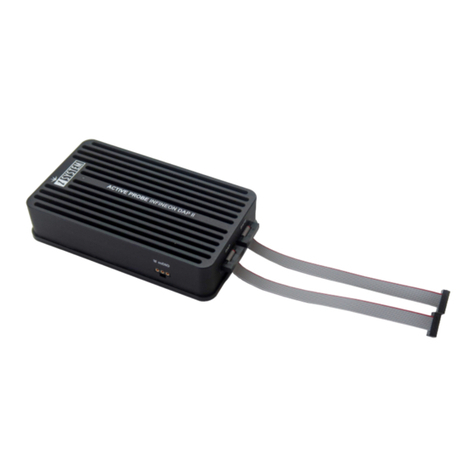
TASKING
TASKING iSYSTEM Infineon DAP/DAPE II user manual

Amprobe
Amprobe LH41A user manual

